China's 1st Mars rover 'Zhurong' lands on the Red Planet

China just successfully landed its first rover on Mars, becoming only the second nation to do so.
The Tianwen-1 mission, China's first interplanetary endeavor, reached the surface of the Red Planet Friday (May 14) at approximately 7:11 p.m. EDT (2311 GMT), though Chinese space officials have not yet confirmed the exact time and location of touchdown. Tianwen-1 (which translates to "Heavenly Questions") arrived in Mars' orbit in February after launching to the Red Planet on a Long March 5 rocket in July 2020.
After circling the Red Planet for more than three months, the Tianwen-1 lander, with the rover attached, separated from the orbiter to begin its plunge toward the planet's surface. Once the lander and rover entered Mars' atmosphere, the spacecraft endured a similar procedure to the "seven minutes of terror" that NASA's Mars rovers have experienced when attempting soft landings on Mars.
Related: China's Tianwen-1 Mars mission in photos
A heat shield protected the spacecraft during the fiery descent, after which the mission safely parachuted down to the Utopia Planitia region, a plain inside of an enormous impact basin in the planet's northern hemisphere. Much like during NASA's Perseverance rover landing, Tianwen-1's landing platform fired some small, downward-facing rocket engines to slow down during the last few seconds of its descent.
The China National Space Administration (CNSA) has not yet officially confirmed the successful landing, but it has been announced on social media by the state-run China Global Television Network (CGTN) and by researchers at Macau University of Science and Technology in China.
Succesful landing of #Tianwen1, on #Mars! Landing point: 109.7 E, 25.1 N, less than 40 km from target location in Utopia Planitia. More details expected later! pic.twitter.com/bMSvziscjiMay 15, 2021
China's Mars rover, called Zhurong after an ancient fire god in Chinese mythology, will part ways with the lander by driving down a foldable ramp. Once it has deployed, the rover is expected to spend at least 90 Mars days (or about 93 Earth days; a day on Mars lasts about 40 minutes longer than a day on Earth) roving around on Mars to study the planet's composition and look for signs of water ice. Utopia Planitia is believed to contain vast amounts of water ice beneath the surface. It's also where NASA's Viking 2 mission touched down in 1976.
Sign up for the Live Science daily newsletter now
Get the world’s most fascinating discoveries delivered straight to your inbox.
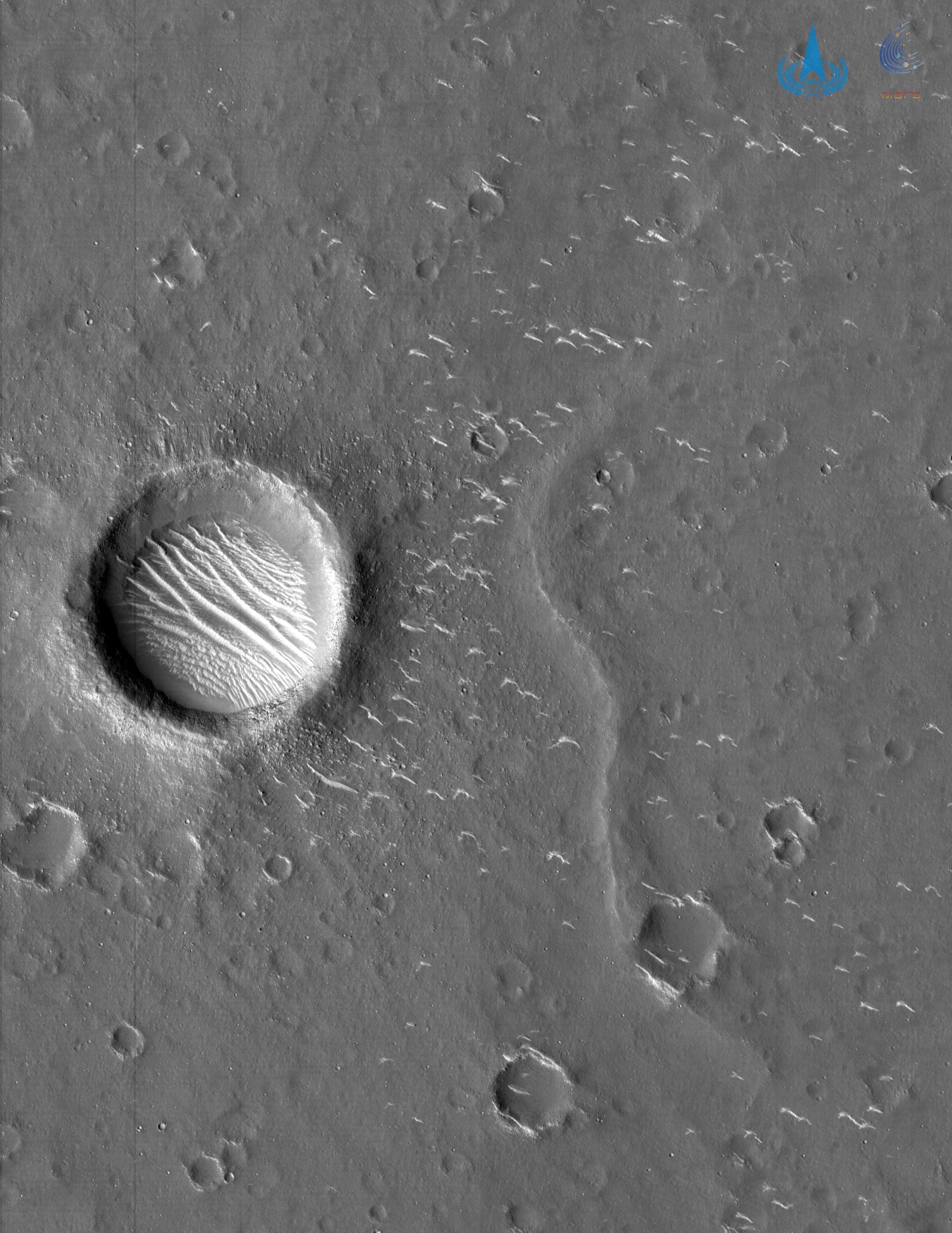
The six-wheeled rover, which is about the size of NASA's twin Mars rovers Spirit and Opportunity, carries six scientific instruments on board, including two panoramic cameras, a ground-penetrating radar and a magnetic field detector. It also has a laser that it can use to zap rocks and study their composition, as well as a meteorological instrument to study the climate and weather on Mars.
Zhurong will work in tandem with the Tianwen-1 orbiter to study the Red Planet, and the orbiter will serve as a data relay station for communications between Zhurong and mission controllers on Earth. The orbiter is designed to last for at least one Mars year, or about 687 Earth days.

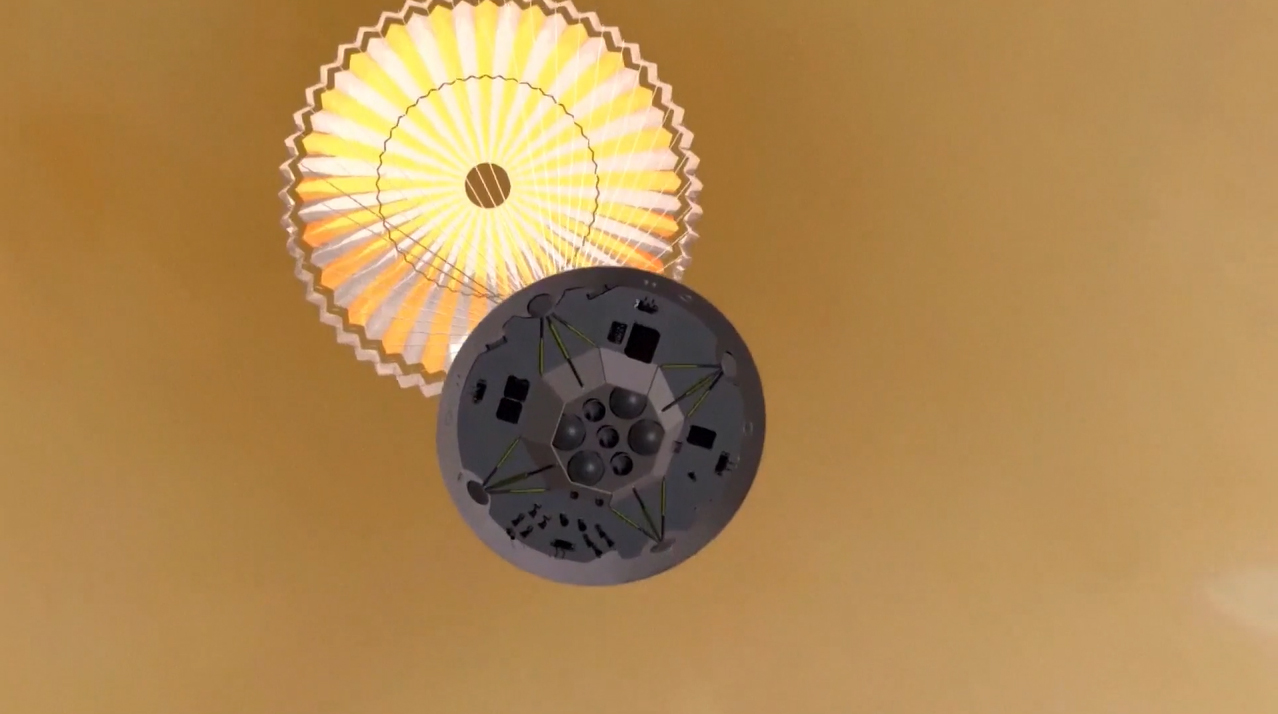
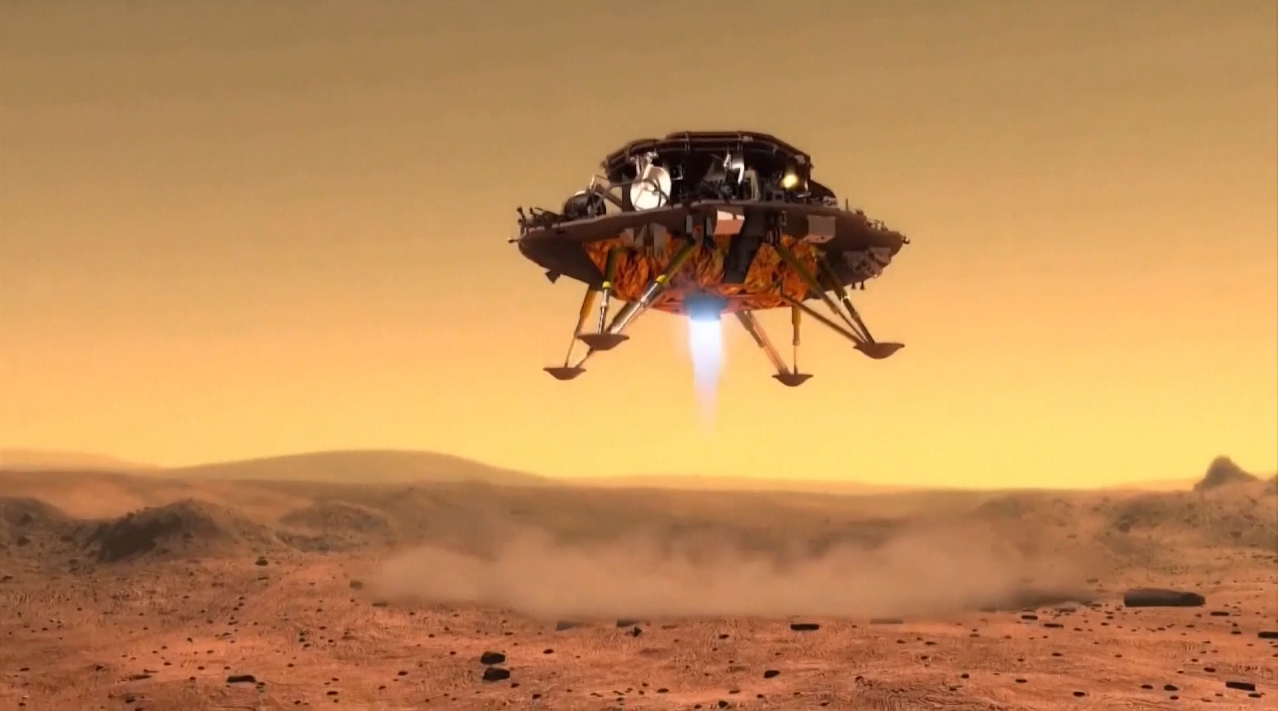
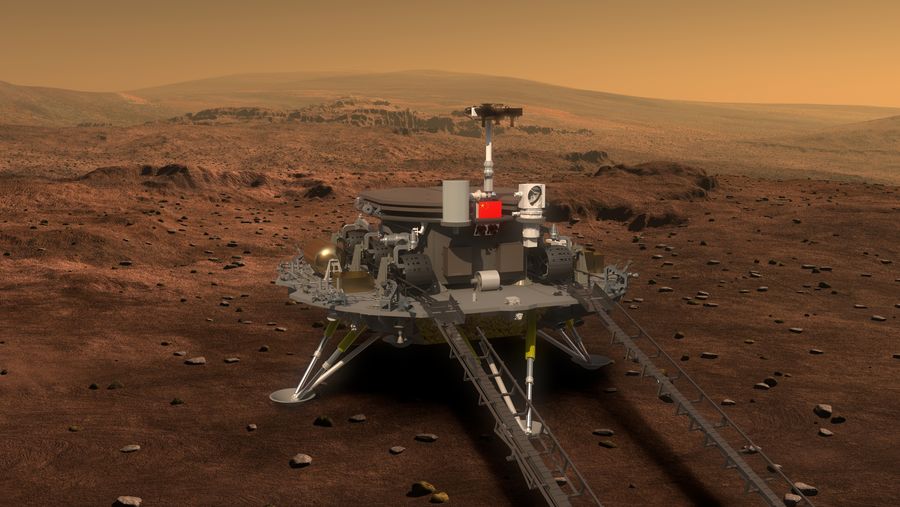
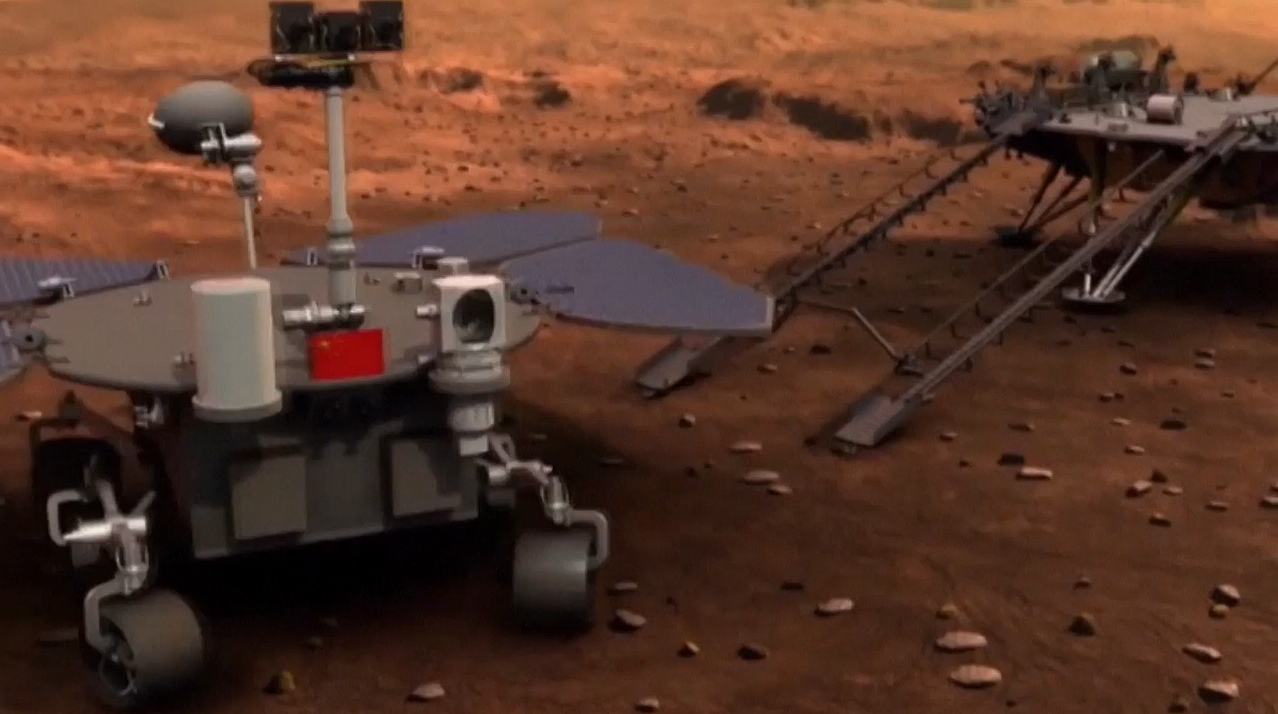
Tianwen-1 may be China's first Mars landing mission, but it isn't China's first Mars shot. The first, an orbiter called Yinghuo-1, launched in 2011 with Russia's failed Phobos-Grunt Mars sample-return mission, which never made it past Earth's orbit after launch, instead crashing into the Pacific Ocean and destroying the spacecraft.
China is now the second nation to successfully land a Mars rover (NASA has landed five rovers on Mars). The successful orbit insertion of the Tianwen-1 mission in February made China the sixth entity to do so, following NASA, the Soviet Union, the European Space Agency (ESA), India and the United Arab Emirates.
Aside from China and NASA, the Soviet Union is the only other country to have landed a probe on Mars, but that mission (called Mars 3) ended prematurely when the spacecraft failed only a few minutes after it landed. The European Space Agency has attempted two Mars landings, but both spacecraft crashed.
Tianwen-1 is China's first interplanetary mission; until now, Chinese spacecraft haven't ventured beyond Earth's moon, where the nation has successfully landed two rovers as part of its Chang'e program, which most recently brought moon rocks to Earth in December. China is also planning to launch an ambitious Mars sample-return mission in 2028, much like a joint NASA and ESA sample-return mission scheduled to launch that same year.
In the meantime, China is working on building its new space station, the first piece of which launched in April — and caused global panic last week when large rocket debris came tumbling to Earth in an uncontrolled fashion. China is also collaborating with Russia on an asteroid sample-return mission scheduled to launch in 2024.
Email Hanneke Weitering at hweitering@space.com or follow her on Twitter @hannekescience. Follow us on Twitter @Spacedotcom and on Facebook.

Hanneke Weitering is an editor at Liv Science's sister site Space.com with 10 years of experience in science journalism. She has previously written for Scholastic Classroom Magazines, MedPage Today and The Joint Institute for Computational Sciences at Oak Ridge National Laboratory. After studying physics at the University of Tennessee in her hometown of Knoxville, she earned her graduate degree in Science, Health and Environmental Reporting (SHERP) from New York University. Hanneke joined the Space.com team in 2016 as a staff writer and producer, covering topics including spaceflight and astronomy.










